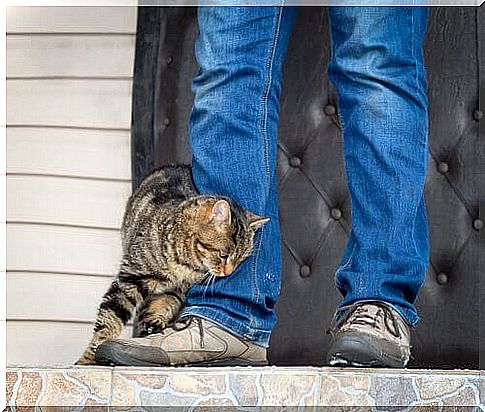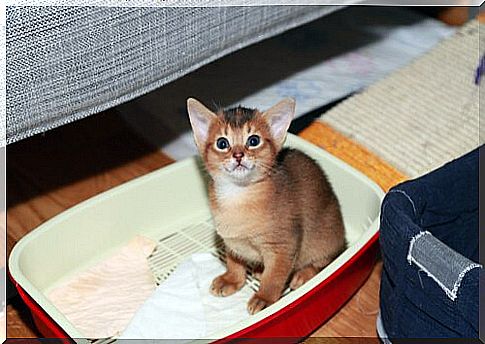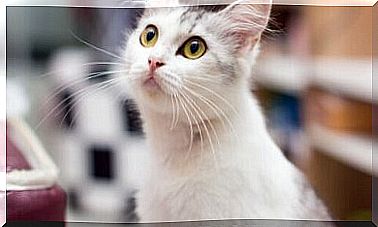Is It Really Possible To Train A Cat?

Cats are very independent animals. Their curious and free-spirited personalities can test any owner’s patience. Not surprisingly, many think that training a cat is an impossible task. In this article we will find out together if it is possible or not to train a cat.
Learn about the cat’s moods
Cats communicate in a very different way than people do. For example, dogs have the ability to convey messages much more clearly. Conversely, being much more reserved and proud creatures, domestic cats expect to be understood on a much less obvious level.
Some behaviors can make it clear that something is wrong. Before you try to teach your cat anything, the important thing is to make sure it is healthy and happy. Among the most alarming behaviors, there are two that are worth learning to recognize:
- They are not particularly loving creatures, but if you notice any discomfort or irritation, it could be from an as yet undiagnosed health problem. If your pet is in a bad mood for several days, if he avoids you or appears particularly aggressive, he may need to be taken to the vet.
- The environment can also affect him, much more than you might think. Cats are creatures that love control and order, so a drastic change can cause a lot of stress. A move, the arrival of a stranger or another animal, the birth of a baby … You will notice that the cat tends to exhibit destructive behavior towards objects in the house or even towards itself.

It is easy to tell when a cat is happy. If it rubs against your legs, wags its tail and holds it up, purring in your presence, it is a sign that it feels comfortable, comfortable and accepts the bond you have created together.
Recommendations for training a cat
Today, the main feline training methods are specially designed to harness your pet’s energy and potential.
These “strategies” are based on positive stimuli and reinforcements, aimed at making the animal feel as motivated as possible.

In order for it to be able to associate a certain action with an order or a reaction from its owner, you can use certain tricks to train a cat, such as:
- Positive reinforcements. Rewards and gifts can be helpful in teaching your kitty to behave a certain way. You can reward him every time he decides to use his litter box, if he behaves well around children or when he uses the scratching post to sharpen his nails instead of the sofa.
- Try to use the same order or stimulus every time, to facilitate the learning process and avoid confusing the animal. It is important to be consistent, otherwise it will be difficult for the animal to associate the action with a positive stimulus and, therefore, will end up not paying attention to it.
- With early training you will facilitate a better growth of your pet, as it will take orders as something normal, accepting them and improving your level of coexistence. Cats that receive late training usually show greater difficulty in losing bad habits that have unfortunately been ingrained for too long.
- Even negative reinforcement can be useful, especially stubborn or pesky cats. For example, those who systematically scratch furniture or even people. Remember that the goal is to educate, not scare or hurt the cat. Therefore, you should always avoid physical punishment. Raising your voice may be more than enough to get her attention.
Finally, you can perform the training using a clicker, a small device that emits a “click” to communicate a command and that allows you to speed up the association between action and reward for different types of animals, including cats of course.









